Summary of Climate Disasters on the Planet: January 1-21, 2025
The world has barely recovered from the climate disasters of 2024, yet nature has already dealt another devastating blow to humanity. The year 2025 has just begun, but the first three weeks of January have been a true test for our planet. In this article, we present the most powerful, anomalous, and unprecedented natural disasters that occurred from January 1 to January 21 of this year.
USA
In January, three powerful winter storms struck the U.S. The first storm hit on January 3, affecting a vast area from Kansas to New Jersey. The hardest-hit states were Kansas, Missouri, Illinois, Kentucky, and West Virginia.
In Kansas, snowfall reached up to 46 cm (18 in), while Nebraska saw up to 40 cm (16 in).
Thousands of motorists were stranded on snow-covered, icy roads. Nationwide, more than 5,700 flights were canceled or delayed. In California, the storm spawned the first tornado of the year, recorded on January 3 in Tehama County, California. Some areas also experienced thundersnow.
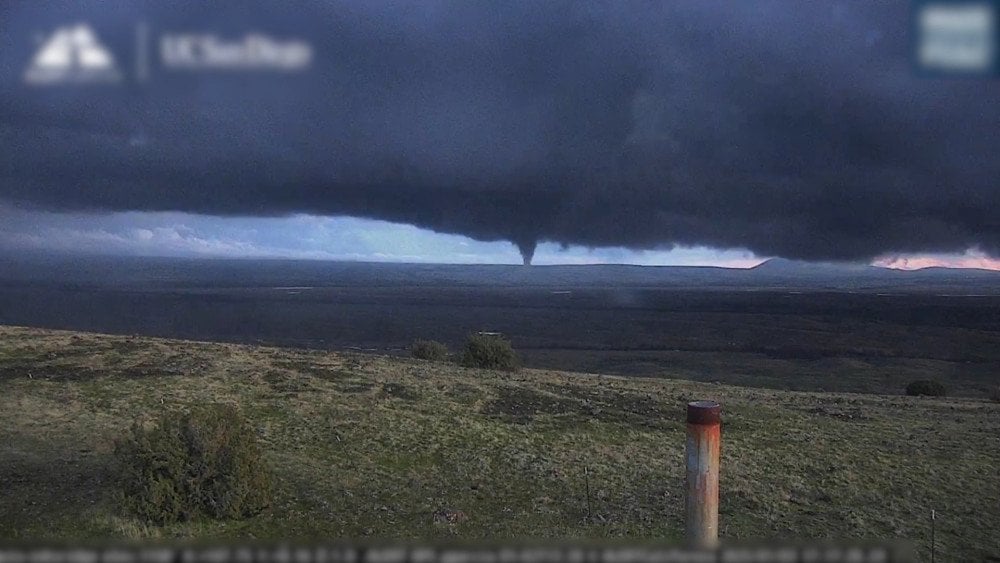
Powerful storm spawning the first tornado of 2025, Tehama County, California, U.S.
The storm left more than 350,000 homes without power, and the sudden drop in temperature posed a serious threat to those left without heat and electricity. The storm claimed seven lives.
Just a few days later, on January 9, the second winter storm struck the Southeastern U.S. It brought severe winter weather to nearly 25 states, stretching from Arkansas to Delaware and as far north as the Midwest and the Great Lakes, impacting approximately 80 million people.

Snow-covered vehicle, Arkansas, U.S.
Once again, residents faced intense snowfall. For example, in Knollwood, Texas, between January 9 and 10, saw 28 cm (11 inches) of snow. Thousands of flights were canceled, including over 1,200 cancellations at Hartsfield-Jackson Atlanta International Airport, the busiest airport in the country. Roads were plagued by numerous accidents, and more than 120,000 residents lost power. A state of emergency was declared in five states.
On January 20, the U.S. was struck by a historic winter storm, posing a severe challenge, especially for southern regions unaccustomed to such harsh winter conditions. At least nine people lost their lives due to hypothermia and road accidents.
The storm's most severe impact was felt along the Gulf Coast, where snowfall is an extremely rare occurrence.
On January 20, Louis Armstrong New Orleans International Airport in Louisiana, recorded 20.3 cm (8 in) of snow—nearly three times the previous record of 6.86 cm (2.7 in). On January 21, Mobile, Alabama, saw more than 12.7 cm (5 in) of snowfall in a single day, breaking a 143-year-old daily snowfall record.
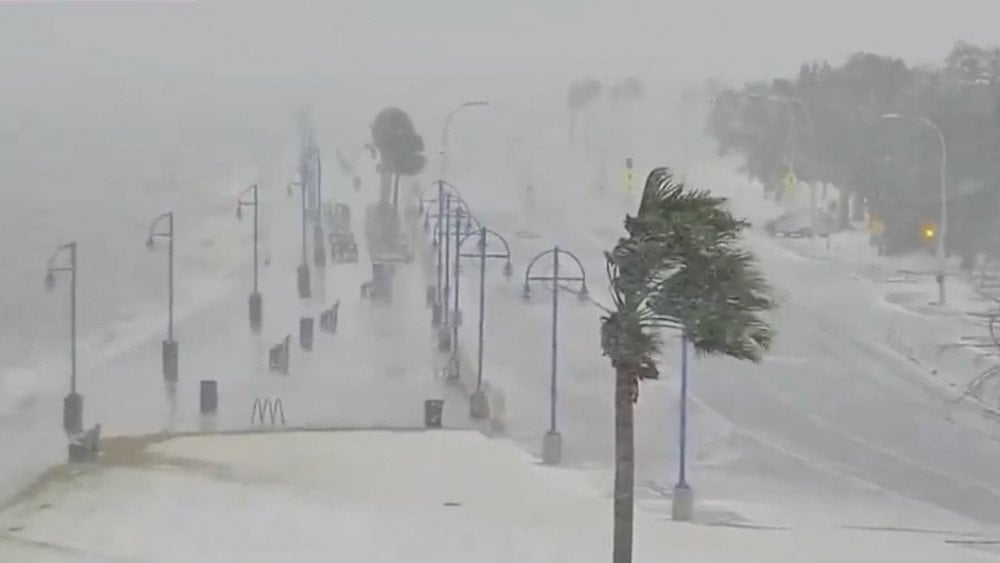
Severe blizzard in New Orleans, Louisiana, U.S.
For the first time in history, the U.S. National Weather Service issued a blizzard warning for Louisiana and Texas.
The influx of Arctic air caused wind chill temperatures to drop to -10°C (14°F) across much of the Gulf Coast, while North Texas experienced temperatures as low as -18°C (0°F). It was evident that the region's infrastructure and residents were unprepared for such extreme weather anomalies.
Since January 7, Southern California has been battling a series of devastating wildfires, fueled by severe drought and Santa Ana hurricane-force winds. The climate disaster claimed at least 28 lives, and the flames consumed more than 16,000 hectares (40,000 acres) near Los Angeles. The battle against the fire hell became a grueling challenge for thousands of firefighters.
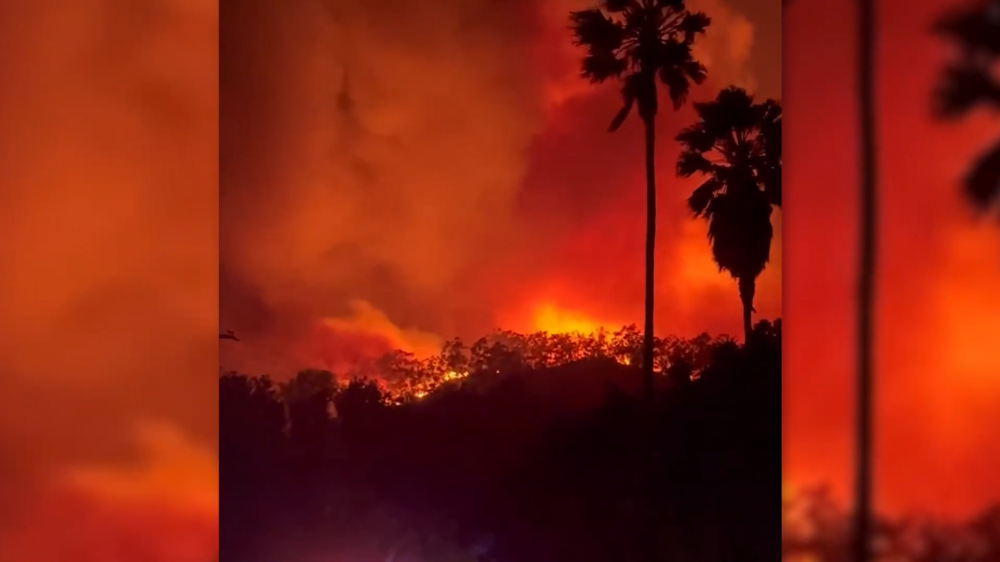
Intense wildfire, Southern California, U.S.
Due to the rapid spread of flames, more than 200,000 residents were placed under mandatory evacuation orders. Even after two weeks, the two largest blazes, Eaton and Palisades, remained active. As of January 21, the Eaton Fire near Altadena was 89% contained, while the Palisades Fire near Pacific Palisades was 63% contained.
The scale of destruction was colossal: more than 12,000 buildings were destroyed. Preliminary estimates suggest that Los Angeles-area wildfires could become the costliest in U.S. history, with damages exceeding $250 billion.
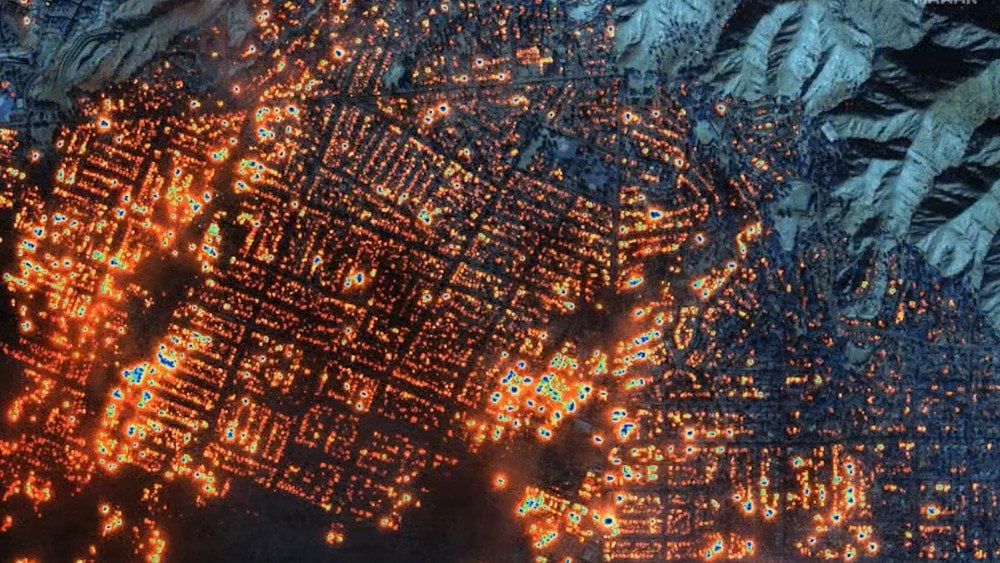
Satellite view of the area engulfed by massive wildfires, Los Angeles region, U.S.
Algeria
In northern Africa, Algeria began 2025 with anomalous cold and heavy precipitation. On the morning of January 1, residents of Naâma, Méchria, and Aïn Séfra (Naâma region) woke up to find sand dunes covered in snow.
Due to freezing rain and snowdrifts, national roads in several parts of the country were closed.
The next snowstorm hit eastern and central Algeria on January 13, lasting for several consecutive days.
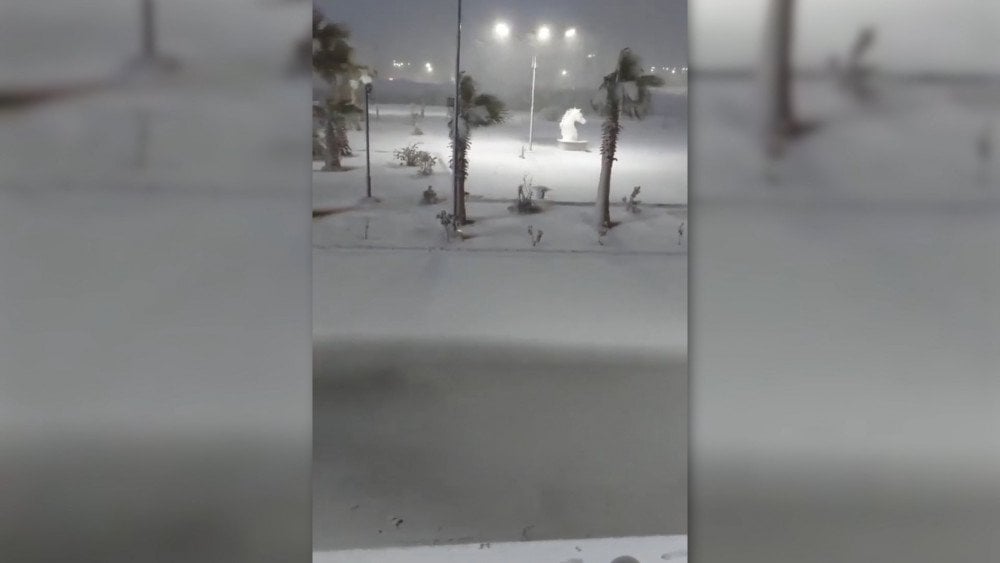
Snow-covered city streets in Algeria
Thousands of vehicles were stranded due to snowdrifts, while torrential rains triggered flooding and landslides in several eastern regions. Such frequent and prolonged snowfall is an extremely rare anomaly for this African country.
Russia
While northern Africa was buried under snow, Russia experienced anomalous thaws instead of the typical “Epiphany frosts”, with temperatures more typical of mid-March.
On January 19, in Kotelnich, Kirov district, tree buds began to bloom.
In Kaliningrad district, unseasonal warmth triggered plant vegetation, awakened insects, and caused snowdrops to begin blooming.
On January 6, in Sochi National Park, the first spring flowers bloomed: Voronov’s snowdrop, Cyclamen coum, Helleborus caucasicus, and Primula vulgaris. Dozens of heat records were broken across the country.
In Armavir, Krasnodar Krai, record-breaking temperatures were recorded for four consecutive days, from January 8 to 11. On January 9, temperatures soared to an astonishing +17.5°C (63.5°F)!

Spring flowers blooming in January due to unseasonal warmth, Krasnodar Krai, Russia
Lithuania
At the beginning of 2025, Lithuania experienced autumn-like weather. Air temperatures were 5–7°C (9–13°F) above normal, bringing torrential rains instead of the usual snowfall. In Kretinga, western Lithuania, between January 1 and January 2 (by 8 AM), 47.6 mm (1.87 in) of precipitation fell—64% of the monthly January norm.
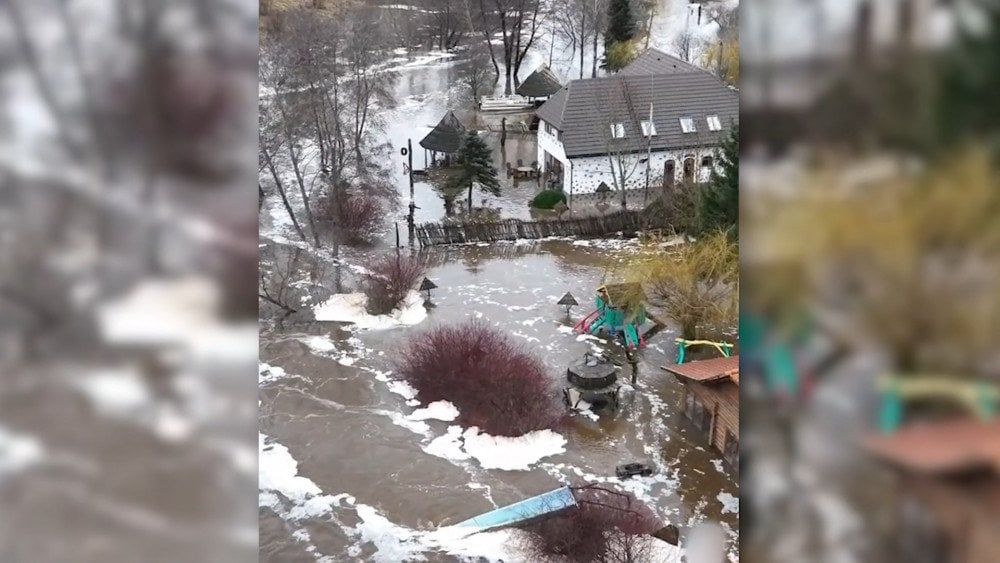
Flooding after heavy overnight rainfall, Kretinga, Lithuania
The stormy weather brought strong, gusty winds to the country: Šventoji – up to 29 m/s (65 mph); Ventės Rago lighthouse, Šilutė District, and Klaipėda Port – up to 28 m/s (63 mph) Fallen trees blocked roads, damaged power lines, and crushed vehicles. Thousands of people were left without electricity.
Torrential rains caused river levels to rise to critical levels, flooding roads and residential areas. A state of emergency was declared in several villages of Kretinga District.
On January 2, in Tauragė, the outskirts of Vilnius, and Šilutė, rain turned into snow, accompanied by thunderstorms.
Saudi Arabia
On January 6-7, a powerful storm with heavy downpours, which have become increasingly common in Saudi Arabia, struck the country once again. The rainfall was accompanied by hail and thunderstorms, triggering flash floods. The streets of Mecca and Medina turned into raging torrents.
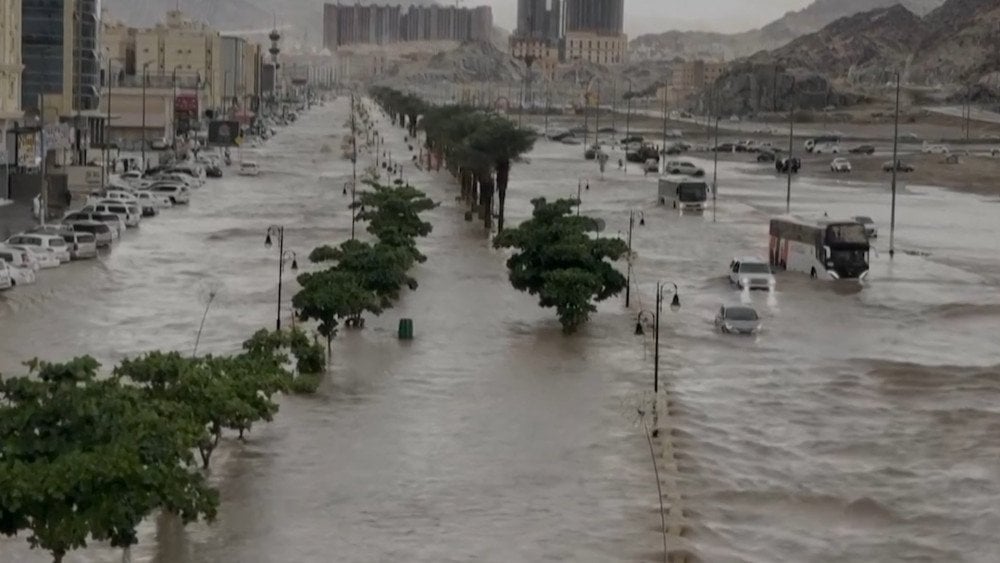
Flooded streets of Mecca, Saudi Arabia
Floodwaters inundated homes and vehicles, swept away bridges, and trapped residents. People formed human chains to rescue children stranded by the flood.
In Jeddah, the hardest-hit city, wind speeds reached 60 km/h (37 mph), and waves exceeded 2 meters (6.5 feet).
In Rabigh, an unprecedented phenomenon occurred: a massive waterspout made landfall, generating high waves. This event alarmed climatologists and local residents, as waterspouts in this region had previously only been observed in open waters.
Italy
On January 17, a powerful storm struck the Sicilian region of Italy.
Heavy rainfall, floods, and storm-force winds reaching 80 km/h (50 mph) caused widespread destruction across the Aeolian Islands, including Lipari and Vulcano.
In the municipalities of Palagonia and Riposto, flooded roads became death traps for drivers.
In the Province of Syracuse, an unusual event for this time of year occurred: Multiple tornadoes formed simultaneously. In Augusta, a tornado ripped off roofs, uprooted trees, and littered streets with debris.
Another tornado tore through Noto, leaving significant destruction in its wake: power lines were knocked down, causing widespread blackouts; buildings, greenhouses, and farmlands sustained heavy damage.
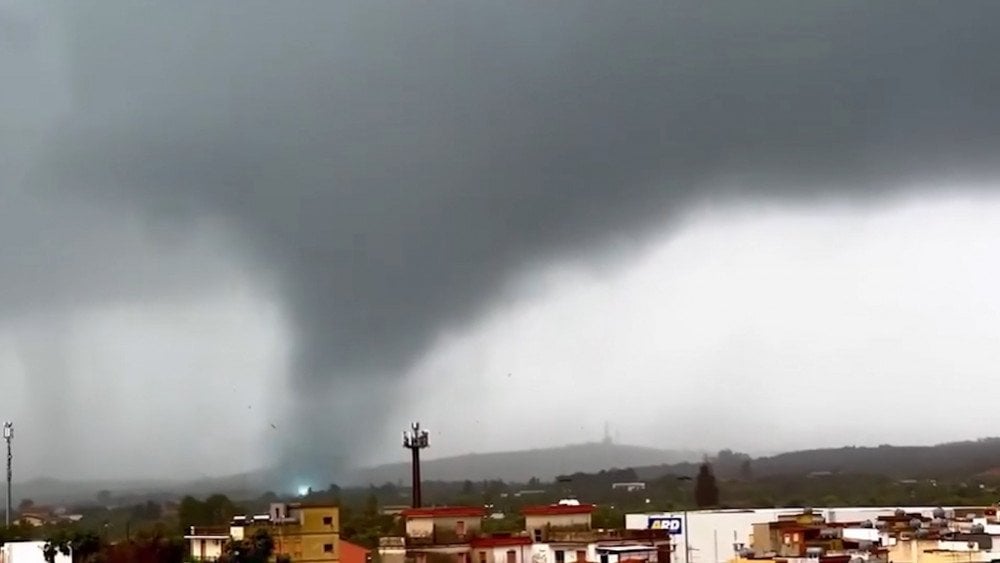
Destructive tornado in Noto, Italy
Australia
Starting January 15, a series of powerful storms struck the eastern coast of Australia, impacting the states of New South Wales and Queensland.
In Sydney, wind gusts reached 120 km/h (75 mph), uprooting trees, damaging roofs and power lines.

Large tree uprooted by severe storm winds, Sydney, Australia
More than 200,000 homes lost power. Lightning strikes and downed power lines ignited local fires. Baseball-sized hail caused significant damage to vehicles and building facades.
In the Brisbane area, a dangerous meteorological event was recorded— a microburst with wind speeds up to 80 km/h (50 mph).
The storm claimed one life.
Brazil
Starting January 16, severe storms hit the states of Santa Catarina and Rio Grande do Sul in Brazil. In Florianópolis, the capital of Santa Catarina, 351 mm (13.8 in) of rainfall was recorded in just 48 hours at the Santo Antônio de Lisboa weather station.
The downpours flooded roads, trapping many drivers in water hazards, forcing them to seek refuge on their car hoods. On one street, the asphalt collapsed, causing a car to fall into a massive sinkhole.
In Porto Alegre, the capital of Rio Grande do Sul, a storm with rain, hail, and winds up to 102 km/h (63 mph) raged across the city. In the downtown area, 20 mm (0.8 in) of rain fell in just 20 minutes, amounting to 20% of the city’s average January rainfall.
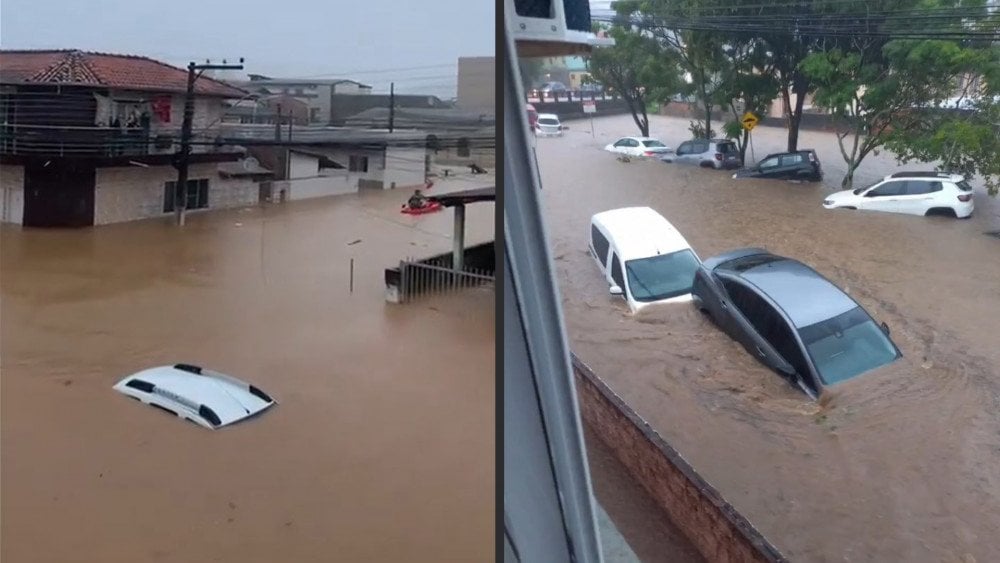
Cars submerged to their roofs in catastrophic flooding, Brazil
Just days earlier, in Minas Gerais, torrential rains triggered major floods and landslides. On January 12, over 80 mm (3.1 in) of rain fell in less than an hour.
The municipality of Ipatinga was hit hardest, where a landslide killed 10 people. Another person lost their life in a storm-related incident in a neighboring municipality.
As of January 15, a state of emergency was declared in 63 cities across Minas Gerais.
Seismic Activity
Scientists warn of a worrisome trend—the steady exponential increase in seismic activity. In recent years, magnitude 5 earthquakes have become almost a daily occurrence, and they are already perceived as the norm. However, over the past six months, the frequency of magnitude 6 and higher earthquakes has significantly increased. At the start of 2025, this trend is already accelerating. In the first three weeks of the year, seven such events occurred.
On January 1, the first day of the year, a strong earthquake with a magnitude of 6.1 struck the South Sandwich Islands region at 11:48 AM local time. The hypocenter was at a depth of 83 km (52 mi).
A seismic event of the same magnitude was recorded the next day, on January 2, at 5:43 PM local time, in Chile, along the border of the Tarapacá and Antofagasta regions. The hypocenter was at a depth of 99 km (62 mi).
On January 5, at 11:18 AM local time, a magnitude 6.3 earthquake struck El Salvador. The epicenter was in the Pacific Ocean, off the coast of La Paz Department, with a hypocenter depth of 33 km (20 mi).
On January 12, at 2:32 AM local time, a magnitude 6.1 earthquake hit Michoacán, Mexico. The hypocenter was at 86 km (53 mi) depth. By 7:00 PM that same day, 485 aftershocks had been recorded, the strongest of which reached magnitude 4.5.
A magnitude 6.9 earthquake struck Hyuga-nada Sea, off the coast of Kyushu, Japan, on January 13, at 9:19 PM local time. The hypocenter was at a depth of 36 km (22 mi). The magnitude was later downgraded to 6.6.
On January 21, at 12:17 AM local time, a strong and shallow magnitude 6.4 earthquake struck southern Taiwan, in Chiayi County. The tremors were felt even in Taipei, the capital. The quake damaged infrastructure and triggered landslides. At least 44 people were injured.

Damage to a residential building caused by the M6.4 earthquake, Taiwan
On January 7, at 9:05 AM local time, a powerful earthquake struck China's Tibet Autonomous Region. It registered as magnitude 6.8, though the U.S. Geological Survey (USGS) reported it as magnitude 7.1. The epicenter was in Tsogo Township in Tingri County, a high-altitude region. The hypocenter was at a depth of 10 km (6.2 mi).
Following the mainshock, over 600 aftershocks were recorded, with the strongest reaching magnitude 4.4.
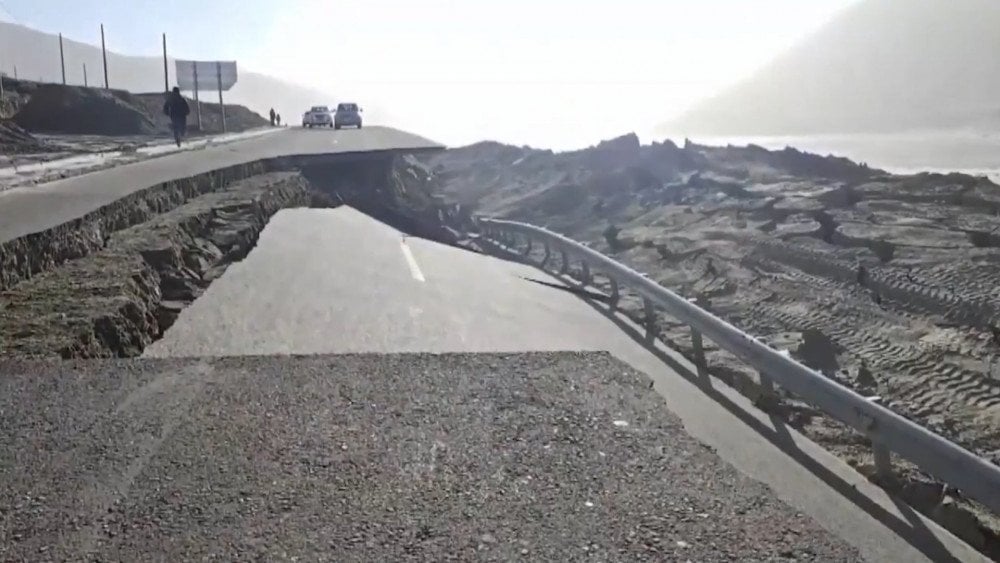
Road destroyed by the M6.8 earthquake, Tibet Autonomous Region, China
The earthquakes devastated dozens of villages and destroyed over 3,600 homes. The village of Gurong was hit the hardest—every house was reduced to rubble. Rescue teams, aided by dogs and radar equipment, worked around the clock to search for survivors. With temperatures dropping below -10°C (14°F) at night, the chances of survival dwindled every hour. The disaster claimed 126 lives, with another 188 people injured. Thousands were left homeless in extreme winter conditions.
This was one of the most powerful earthquakes to hit the region in decades.
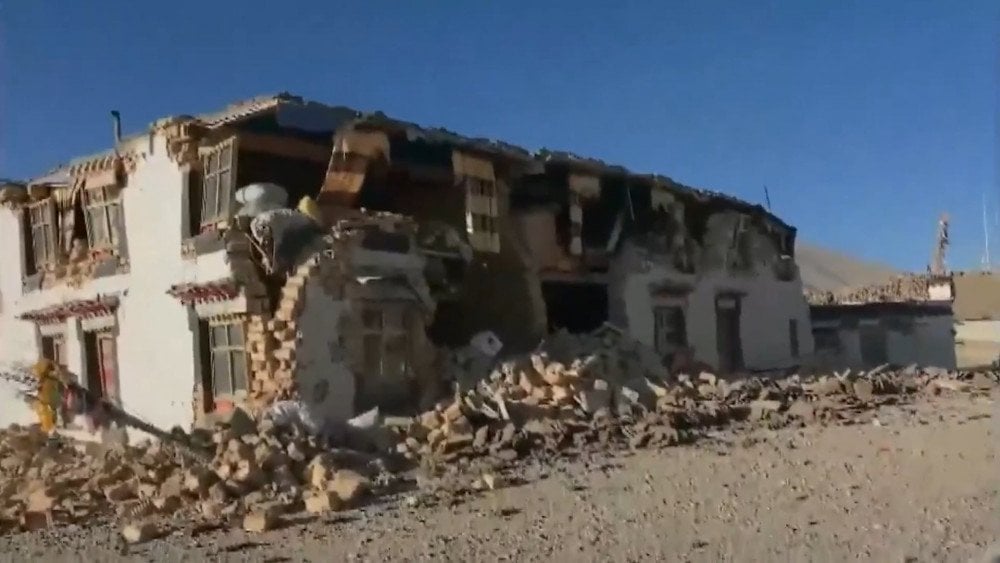
Collapsed residential building after the M6.8 earthquake, Tingri County, Tibet Autonomous Region, China
The pattern of climate disasters we are witnessing perfectly aligns with a mathematical model presented by an international team of scientists years ago. And the recent predictions these experts have made for 2025 do not bode well.
The intensity of natural disasters on the planet is expected to increase by 12–15% compared to 2024, a year that already set multiple climate records. Without decisive action from humanity, there is no reason to expect a slowdown or reversal of this trend.
Unfortunately, previous warnings from scientists— predicting the escalation of climate catastrophes and urging communities to prepare—were ignored, which caused many people to suffer. Timely action could have prevented many of these tragedies, which were the direct result of humanity’s unwillingness to face the truth.
Today, specific forecasts of climate threats have been announced both for individual countries and for the planet as a whole. Proposals and solutions on how to counter these challenges have also been put forward. But will humanity hear us this time? The question remains open...
You can watch the video version of this article here:
Leave a comment